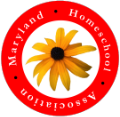Transforming Instructional Hours Into Credit Hours

Whether your homeschooler is on track to attend college or immediately join the workforce, tracking hours in high school is important for being able to accurately measure and award high school credits.
High school graduation requirements serve as a basic guideline for how many hours a homeschooler will need for various subjects. So for example, let’s look at the requirements for the state of Maryland as of 2018.
Most schools define a credit or Carnegie unit as 120 hours of contact time in a given subject. Typically, brick and mortar schools cover a single high school credit over the course of 180 days, from September – May. Do a little math and you’ll see that 120 hours spread over 36 weeks comes out to around 3 hours-20 minutes each week of instructional time for each high school credit.
So, as a parent, how do you know how to award credits for a course? Time tracking. Start a path towards independent learning by assigning your high school homeschooler the responsibility for time tracking their education at the end of each day.

Have your learner complete a daily log, like the one on the right. It is not important to touch each subject every day. What is important is that you maintain good records of topics and subjects covered. This will be invaluable when creating the high school transcript.
Review the logs at the end of each week so you can assess where your “regular, thorough instruction” stands. Sometimes the best laid plans fall off track due to illness, family emergencies, vacation, or change of plans. Life happens. However, by maintaining a log you can see when and how you’ll need to get back on track so you can grant your homeschooler a meaningful high school credit.
Last modified on September 5, 2023




